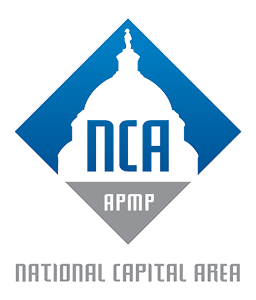Merriam Webster’s defines “innovation” as (1) the introduction of something new; (2) a new idea, method, or device: novelty. Interestingly, while this definition does not mention added value, when we talk about seeking innovation it is inherently understood that the innovation must also bring about a positive impact or change either in the operations or the output.
How do we quantify this improvement? Considering the three primary elements to basic program management, an innovation will be deemed an improvement over the legacy process either because it reduces the cost (per unit, per engagement, etc.); shortens the schedule (faster development, deployment, response times, etc.); or increases ultimate performance. Generally, innovation within the proposal industry primarily focuses on decreasing the amount of effort required to produce a proposal or on increasing the quality of the response.
Innovation that decreases effort (where effort can be measured either as number of people or the amount of time) often focuses around tools and process improvement. The idea is that if we have a more automated and connected workforce, the hard work of developing a proposal can become less difficult because we reduce either the time or the cost to develop and deliver a winning solution. For example, tools that enable the use of reusable content, automating data workflow, and compliance checks are some of the myriad offerings in the market today. A great source for finding the latest innovation tool in the proposal development world is NCA’s very own AppMaven (a.k.a. Beth Wingate). The AppMaven describes in the introduction to the latest edition of her book, AppMaven’s Favorite Productivity Tools[i], that the driving force behind her success is leveraging innovation to “figur[e] out how to use technology to allow…do[ing] more and better-quality work and mak[ing] it easier, or at least more efficient, to do that work.” The book is chock full of the best tools available today that can improve, ease, or simplify proposal development. Two of my absolute favorites are AcronymFinder.com and SnagIt.[intense_blockquote width=”33%” rightalign=”1″]At the end of the day, innovation can only be as good as the degree to which your teams embrace it. [/intense_blockquote]
AcronymFinder.com is a web-based tool that defines all possible references for acronyms. To help identify the correct acronym you are looking for, AcronymFinder.com provides results categorized into one of six different fields: Information Technology (IT); Military & Government; Science & Medicine; Organizations & Schools; Business & Finance; Slang & Pop Culture. If the string of letters do not exist on AcronymFinder.com, it likely only exists on Urbandictionary.com…and if so, is not appropriate for use in a business proposal!
SnagIt is a productivity tool you need to purchase and download to your computer. This tool allows you to make screen, text, and video captures, including editing and markup that results in high-quality, high-resolution images for use in multiple media. As someone who is not a trained graphic artist nor well-versed in graphic design tools, I have found that the $50 investment is absolutely worth it. SnagIt is incredibly easy to use and allows me to edit and modify screenshots for use in compelling and successful presentations and proposals without the need for the time or expense of a graphic artist.
The other type of innovation for proposal development focuses on process improvement. These types of innovation focus on changing the process by which we develop proposals to either standardize or streamline proposal operations, with the ultimate goal of reducing the effort and increasing the quality of the proposal. Innovations that fall into this second category—ones that improve quality—often focus on repeatability and reuse. These can be either via process assessment services or, again, via the implementation of tools that leverage technology to improve our process.
Many proposal consulting firms in the market provide these types of process improvement assessments. They can help to identify innovations in how you operate your proposal team that can provide decreased development times and increased quality. For example, OCI offers a proposal readiness assessment in which they “review…the company’s proposal methodologies” and provide “[a]n assessment including strengths and deficiencies, with a recommended fix for each deficiency.” Shipley also provides Proposal Assessment Services to “evaluate clients’ past proposals and assess their effectiveness” against best practice standards to “identify specific ways to enhance competitiveness and create realistic improvement strategies.”
What we should not forget is that all these innovations require discipline and change management to produce effective results. Whatever innovation you choose to implement must be partnered with an implementation plan that embeds the change within the organization. The organization needs to know how this innovation fits within the existing process; how it will be incorporated to the rest of your firm’s proposal lifecycle; and how its execution will be managed, monitored, measured, and reinforced. At the end of the day, innovation can only be as good as the degree to which your teams embrace it. Meaning, at the heart of any proposal innovation, it does still comes down to people.
[i] ©2018, (downloadable at http://success.lohfeldconsulting.com/acton/form/8576/005d:d-0002/0/-/-/-/-/index.htm), p. 1.



